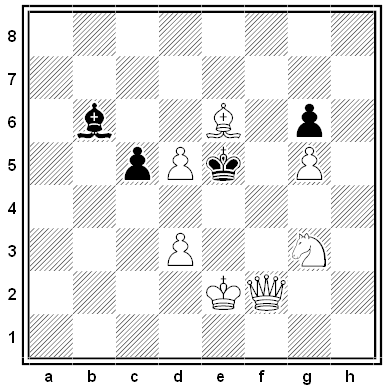In a Word
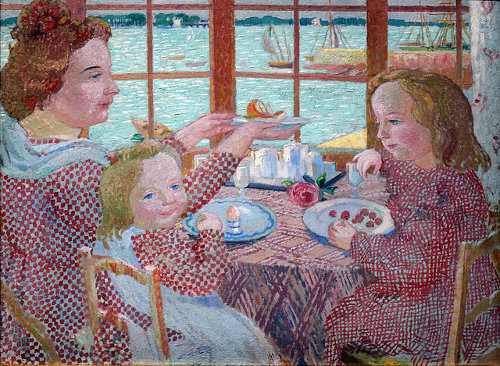
jentation
n. breakfast
Slipping

In 1960 Jane Goodall watched a chimpanzee repeatedly poking pieces of grass into a termite mound in order to “fish” for insects, the first observation of tool use among animals. When she notified anthropologist Louis Leakey of her discovery, he responded with a telegram:
NOW WE MUST REDEFINE TOOL, REDEFINE MAN, OR ACCEPT CHIMPANZEES AS HUMAN.
Truth and Fiction
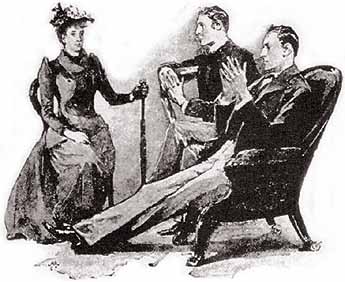
We know that Sherlock Holmes lived in London — we have this on the authority of Arthur Conan Doyle. But we would resist saying that the residents of London have included Sherlock Holmes. How can the one be true but not the other?
Suppose that Doyle had written a story in which Holmes had had tea with prime minister William Gladstone. Then it would seem correct to say that Holmes had had tea with Gladstone, but wrong to say that William Gladstone had once had tea with Sherlock Holmes. What can we make of this? Can Doyle be wrong about his own character’s actions? Is all fictional discourse false?
We don’t normally regard it so. “If you say that Sherlock Holmes lived in Baker Street I may wager that you are mistaken,” writes philosopher John Woods. “Then, as we all very well know, what you say wins the bet; what I say loses it. … It is an interesting and important curiosity of the affair that [the argument] that Holmes could not have lived in Baker Street because he could not have lived anywhere, he being but fictional, is not automatically, or always, if ever, deemed a satisfactory endorsement of my claim at the expense of yours. The bet is still yours.”
(From The Logic of Fiction, 1974.)
Night Crossing
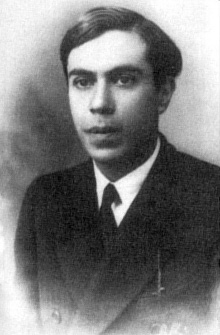
In late March 1938, Antonio Carrelli received a letter and a telegram in short succession. Both were from Ettore Majorana, the brilliant Italian physicist who had recently joined the faculty of the Naples Physics Institute, where Carrelli was director.
The letter read, “Dear Carrelli, I made a decision that has become unavoidable. There isn’t a bit of selfishness in it, but I realize what trouble my sudden disappearance will cause you and the students. For this as well, I beg your forgiveness, but especially for betraying the trust, the sincere friendship and the sympathy you gave me over the past months. I ask you to remind me to all those I learned to know and appreciate in your Institute, especially Sciuti: I will keep a fond memory of them all at least until 11 pm tonight, possibly later too. E. Majorana.”
The telegram had been sent immediately afterward: “Dear Carrelli, I hope you got my telegram and my letter at the same time. The sea rejected me and I’ll be back tomorrow at the Hotel Bologna traveling perhaps with this letter. However, I have the intention of giving up teaching. Don’t think I’m like an Ibsen heroine, because the case is different. I’m at your disposal for further details. E. Majorana.”
On investigation it was found that Majorana had withdrawn all the money from his bank account and taken the night boat from Naples to Palermo on March 23. He had sent both messages from Palermo and then boarded the steamer to return to Naples on the night of March 25.
But there the trail ended. On the return journey Majorana had shared a compartment with a local university professor, but beyond this point no trace of him could be found. His family offered a reward of 30,000 lire for his whereabouts, and Enrico Fermi implored Mussolini for aid, citing the “deep brilliance” of Majorana’s physics, which he compared to those of Galileo and Newton. A police search found no body but offered no clues.
What happened to him? Theories abound: The most natural explanation, that he committed suicide, is discounted by both his family and the bishop of Trapani, citing his strong Catholic faith. (Also, it doesn’t explain the withdrawal of the money.) Other theories contend that he was murdered, that he fled physics because he foresaw the advent of nuclear weapons, that he had a spiritual crisis and joined a monastery, that he became a beggar, and that he moved to South America. No one knows.
(Barry R. Holstein, “The Mysterious Disappearance of Ettore Majorana,” from the Carolina International Symposium on Neutrino Physics, 2008.)
If You Can’t Beat ‘Em …

When stencil artist DS added his “Bad Kitty” to a London wall in 2012, he was dismayed to find a man removing it only eight hours later.
So he took a photo and used that to create a new stencil on the same spot.
He returned the next day, hoping to get a photo of a man removing a stencil of a man removing a stencil. “I thought it would rip a hole in the space-time continuum or something,” he told the Daily Mail.
But “He came when I was across the road having breakfast, after a while, and having his photo taken next to it lots of times, he left it.”
Penny Wisdom
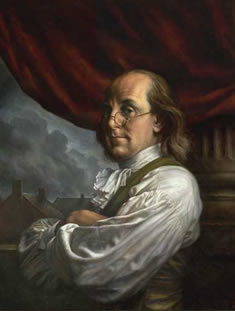
More proverbs from Poor Richard’s Almanack:
- Those who have nothing to trouble them, will be troubled at nothing.
- Great modesty often hides great merit.
- The Muses love the Morning.
- Do me the favour to deny me at once.
- There’s none deceived but he that trusts.
- If evils come not, then our fears are vain; and if they do, fear but augments the pain.
- Full of courtesie, full of craft.
- The tongue is ever turning the aching tooth.
- Nothing dries sooner than a Tear.
- In the Affairs of this World Men are saved, not by Faith, but by the Want of it.
- An old young man will be a young old man.
- The prodigal generally does more injustice than the covetous.
- Singularity in the right, hath ruined many: happy those who are convinced of the general Opinion.
- Why does the blind man’s wife paint herself?
“The wit of conversation consists more in finding it in others, than shewing a great deal yourself. He who goes out of your company pleased with his own facetiousness and ingenuity, will the sooner come into it again. Most men had rather please than admire you and seek less to be instructed and diverted, than approved and applauded; and it is certainly the most delicate sort of pleasure, to please another. But that sort of wit, which employs itself insolently in criticizing and censuring the words and sentiments of others in conversation, is absolute folly; for it answers none of the needs of conversation. He who uses it neither improves others, is improved himself, or pleases any one.”
Zebras at Sea
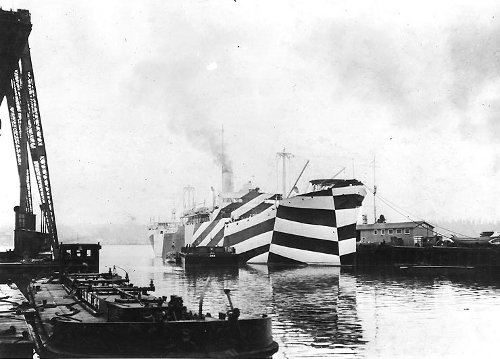
What is this? It’s the American cargo ship West Mahomet in port, circa November 1918. During World War I British and American merchant ships adopted “dazzle camouflage” in hopes that it would help to confuse their type, size, and heading in enemy rangefinders.
It’s hard to say how well it succeeded as camouflage, but it’s a notable episode in art history: The painting style employed ideas from cubism and vorticism, and English artist Edward Wadsworth, who had helped to direct the effort, continued to pursue these themes even after the war — below is his Dazzle-ships in Drydock at Liverpool from 1919.
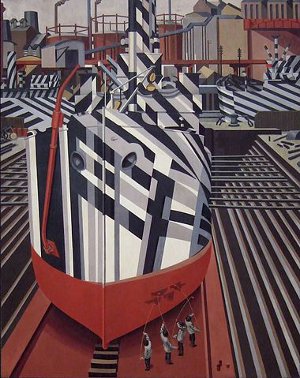
Unquote
“Why can’t somebody give us a list of things that everybody thinks and nobody says, and another list of things that everybody says and nobody thinks?” — Oliver Wendell Holmes Sr.
“Isn’t it strange that we talk least about the things we think about most!” — Charles Lindbergh
Podcast Episode 3: Extreme Pedestrians, Kangaroo Stew, and Samuel Taylor Coleridge
In 1926, a woman named Lillian Alling grew disenchanted with her life as a maid in New York City and resolved to return to her native Russia. She lacked the funds to sail east, so instead she walked west — trekking 6,000 miles alone across the breadth of Canada and into Alaska. In this week’s episode of the Futility Closet podcast, we’ll consider Alling’s lonely, determined journey, compare it to the efforts of other long-distance pedestrians, and suggest a tool to plot your own virtual journey across the United States.
We’ll also learn the truth about the balloon-borne messenger dogs of 1870 Paris, ponder the significance of October 4 to Samuel Taylor Coleridge, and offer a chance to win a book in the next Futility Closet Challenge.

